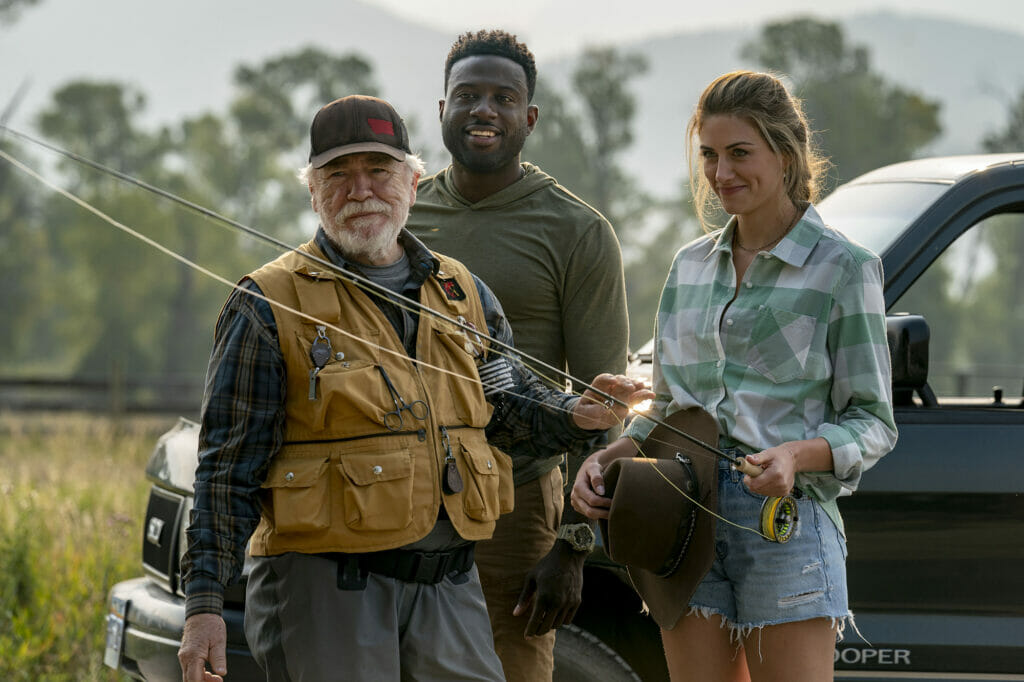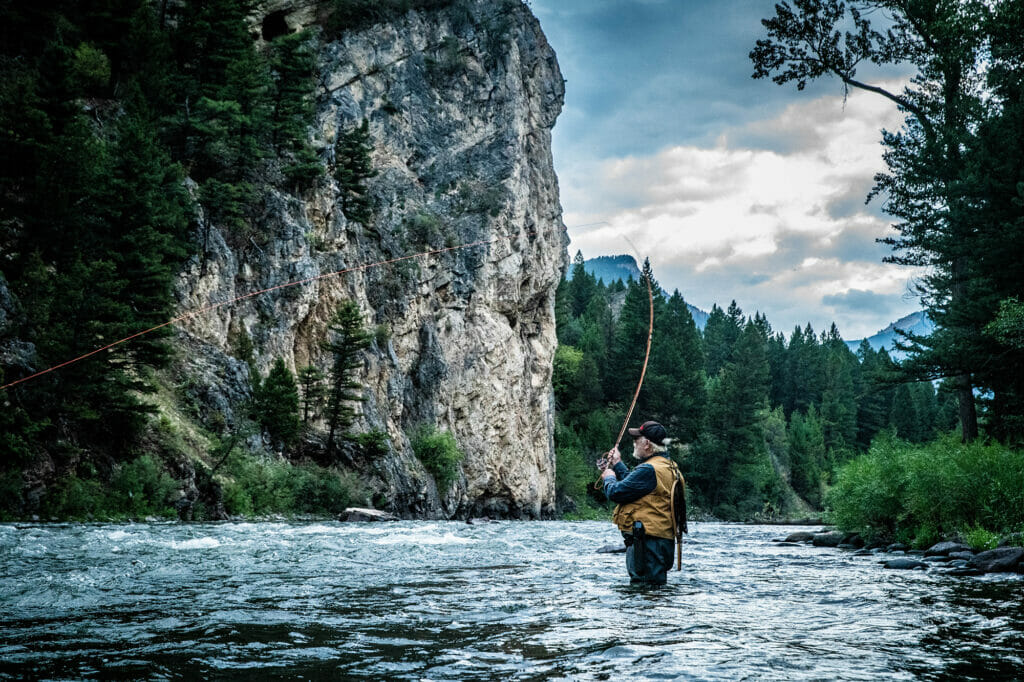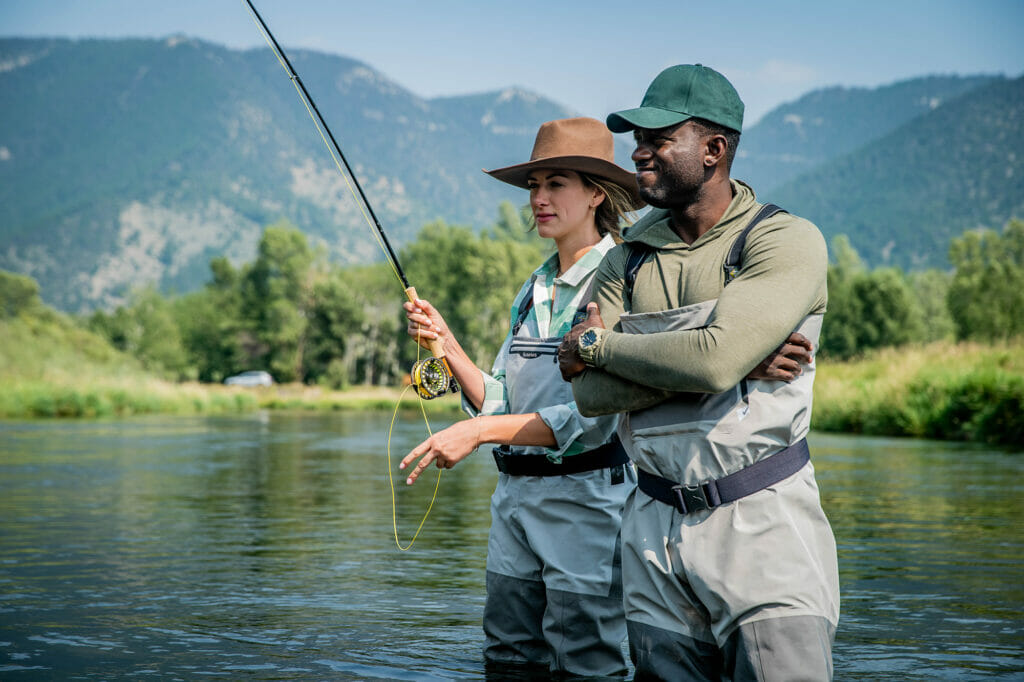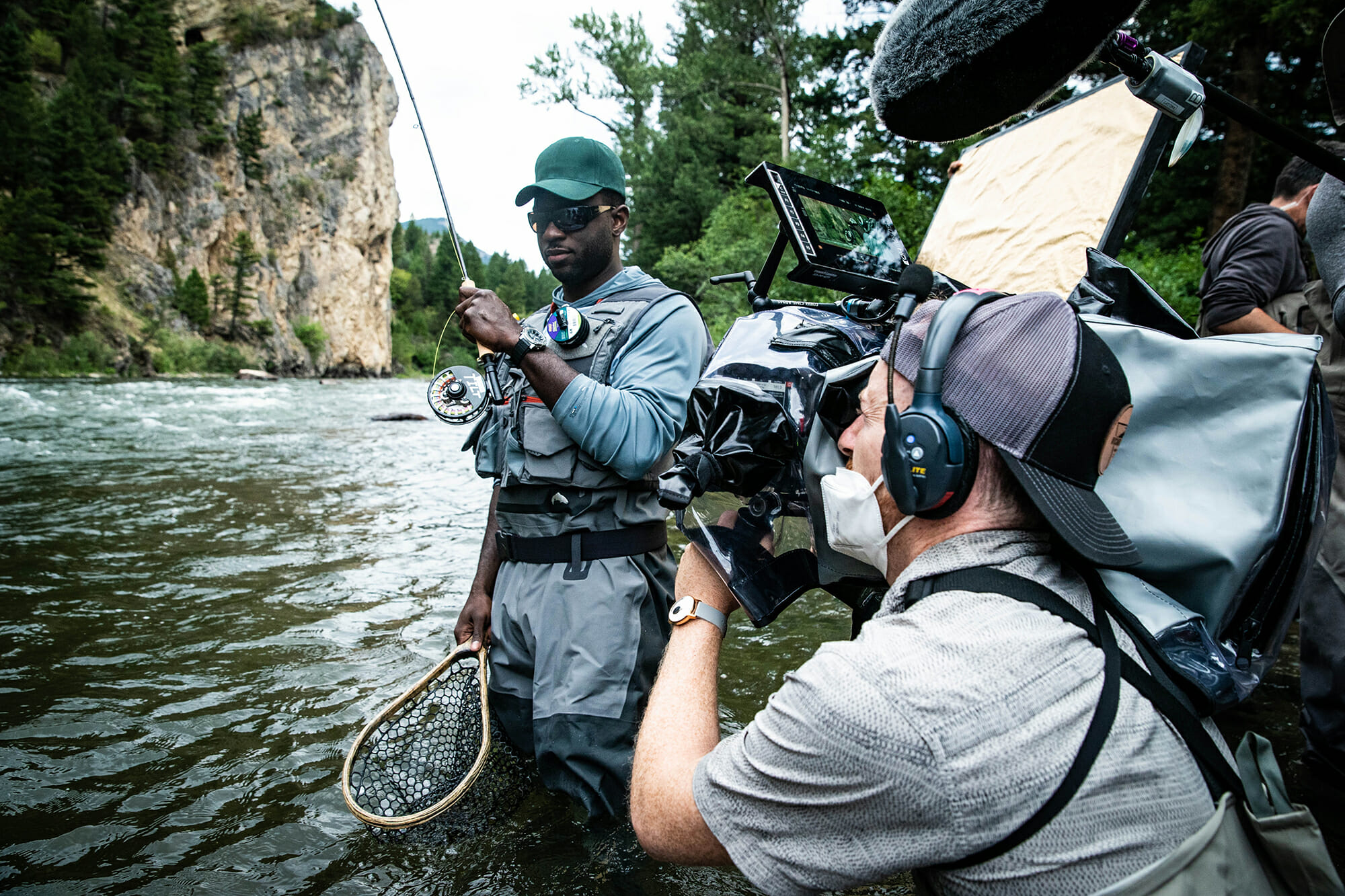Hollywood gets a lot of things right. When it gets things wrong, it’s often because writers (and directors and actors) are forced to try to mimic something they know little about but that avid practitioners are adept at.
Consider fishing and hunting, which aren’t exactly atop the list of most-practiced hobbies of the La-La Land crowd.
It’s one thing if it’s a short scene. “Wedding Crashers” was great despite a ridiculously unrealistic quail-hunting scene. And we can even forgive the horrible fishing-from-horseback scene in “Yellowstone.”
But when the activity in question is a key part of the film’s narrative, inauthenticity can be painfully obvious. If the fly angling scenes in “A River Runs Through It”, for example, had been cringeworthy, there’s no way it would have resonated as well as it did (and still does).
Now, more than 30 years after the release of what is generally considered the best fly-fishing-centric movie made, the team behind another film with a strong fly-fishing theme wanted to make sure they got things right.
“Mending the Line” is the story of a Marine veteran Colter (Sinqua Walls, “Friday Night Lights” and the upcoming reboot of “White Men Can’t Jump”) being treated for PTSD at a fictional VA hospital in Montana. Languishing in his treatment, Colter connects with Vietnam vet and avid angler Ike Fletcher (Brian Cox, “Succession”) as he works to recover from his physical and emotional trauma.

“I said from the beginning that we had to get each of these elements — the military stuff and the fly-fishing stuff — right,” said director Joshua Caldwell, who started fly fishing in earnest himself after moving from LA to New York in 2017. “We didn’t want to be the guy in the commercial with the spinning reel on top of his rod and backwards.”
The first step toward that goal was already in place. Steve Camelio, who wrote the script, is an avid fly angler who lives in Montana. He’s also familiar with challenges of veteran healthcare, as his father was a Vietnam vet who fought cancer caused by Agent Orange.
Camelio served as an advisor during filming. The team also brought in a host of other experts.
“It’s a challenge on an indie budget to bring in a lot of advisors and experts,” Caldwell said. “Steve did a lot of groundwork, in part by connecting with Sage and Simms.”
Not only did those companies help outfit the crew and actors with gear, but the connection with Sage (along with RIO Products and Redington, part of the Far Bank parent company) helped facilitate bringing on Far Bank’s Simon Gawesworth as the film’s casting and fishing technical advisor.
Under Gawesworth’s tutelage, Cox quickly became a decent caster. So, too, did cast member Perry Matfield, who portrays town librarian Lucy (who inspires Colter to read Casting Forward by Steve Ramirez.

“And once we got to Montana, Simon was there with us every day of the fishing,” Caldwell said. “He made sure everything was set up correctly. And we didn’t have to run out to a fly shop and buy a set of nippers. He had everything.”
Casting and looking authentic are one thing. What about hooking, fighting and landing fish?
“From the beginning, and Steve can attest to this, I was saying, ‘How are we going to do the fishing?’” Caldwell said.
Camelio was able to connect with Jason Borger, a well-known member of the fly-fishing world who was closely involved with “A River Runs Through it.” Borger provided lots of helpful tips on how to pull off the fishing scenes.
For fish-fighting scenes, for example, the crew tied milk jugs to the line. Filled with a few rocks for additional weight, the semi-buoyant jugs would move in the current.
While many movie trout are obviously hatchery-raised with ragged fins, the salmonid stars of “Mending the Line” were all wild and perfect. That meant the fish had to be caught (from the same water where they would be used in filming) the day of filming, held on site and handled carefully before release. (Proper permits were obtained.)
Veteran fisheries biologist Joe Urbani, who runs a fisheries consulting business in Bozeman, headed up that effort. Fishing being fishing, there were a few pressure-packed mornings as the angling team sought the fish needed for the day’s filming.

Camelio noted the time he had a great afternoon of fishing on Dupey’s Spring Creek. He figured the Urbani crew would have no trouble getting fish the next morning. They ended up struggling mightily, though they eventually were able to catch enough trout to get through the day.
Unlike in “A River Runs Through It,” where a character must catch a trophy trout, there were no such details in this script. The fish that were used were the fish that the Urbani team were able to wrangle that morning.
The team would hold fish in a submerged crates and landing nets until they were ready for the quick fish-handling release shots.
As much as Caldwell would have loved to film rising fish and fly takes, that simply wasn’t practical given time constraints and the budget. That’s where Gilbert Rowley of Capture Adventure Media and Ryan Kelly of @greenriverflyfisher came into the picture.
Both provided clips that Caldwell and editors were able to weave into their own footage, a tactic that worked seamlessly.
The result of the well-thought-out approach is that Caldwell was able to ensure that fishing-related elements of the film — from action to gear and clothing to the settings — were as authentic as possible.
“General audiences aren’t really going to pick up on [the accuracy], but we wanted to make sure we got it right for the fly-fishing community,” Caldwell said. “We wanted people to look at the fishing and say, ‘They got it right.’”
They will.
“Mending the Line” opened in theaters on June 9. Click here to read TU’s Kirk Deeter’s review of the film.



